
How to Use Adafruit AS7341: Examples, Pinouts, and Specs
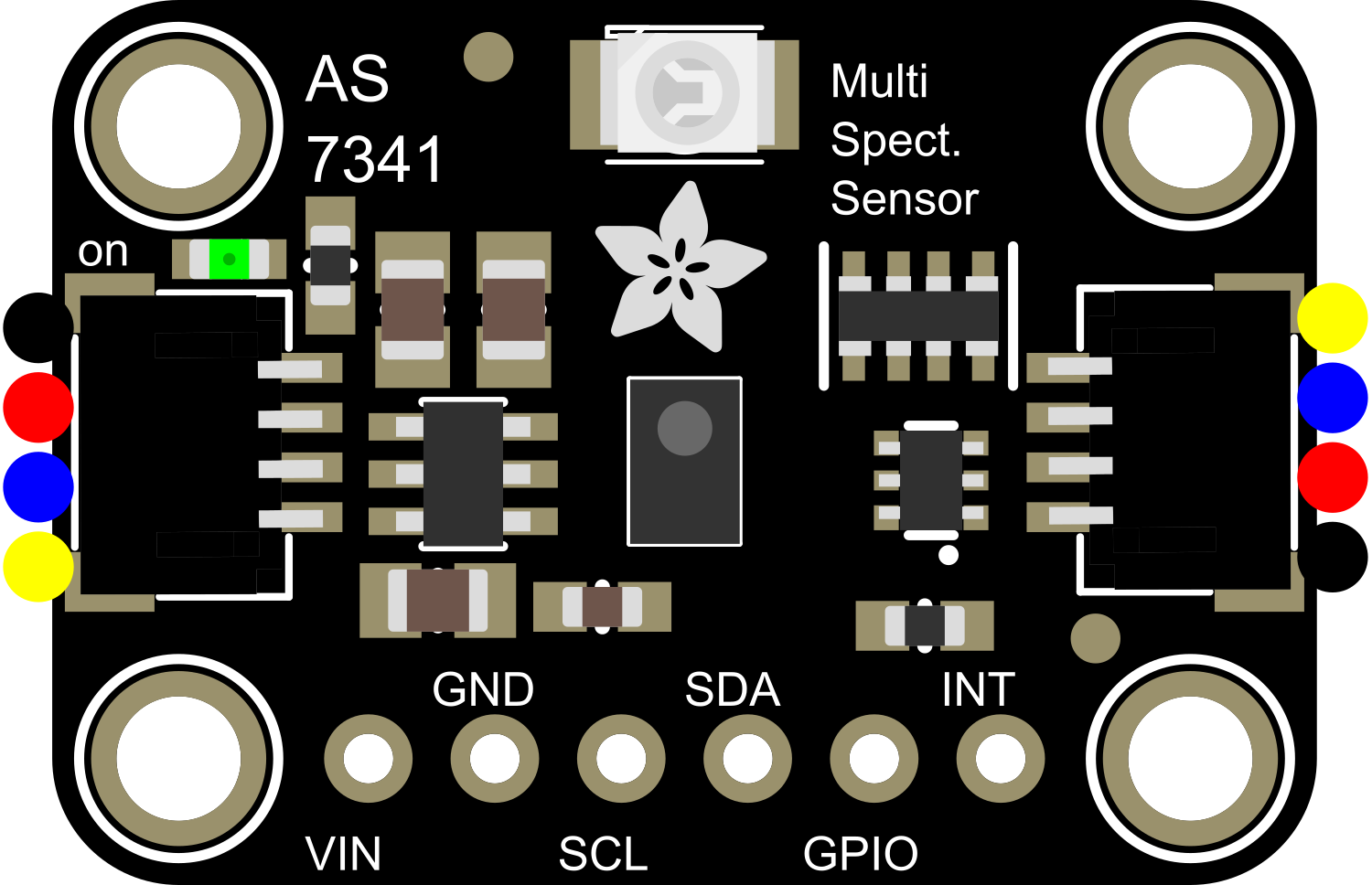
 Design with Adafruit AS7341 in Cirkit Designer
Design with Adafruit AS7341 in Cirkit DesignerIntroduction
The Adafruit AS7341 is an advanced multi-spectral sensor that provides precise measurements of light intensity across multiple wavelengths. This sensor is capable of detecting and measuring a wide range of colors and light wavelengths, making it an invaluable tool for applications such as color sensing, color calibration, ambient light sensing, and spectral analysis for material identification.
Common applications include:
- Scientific research
- Industrial color matching and quality control
- Environmental monitoring
- Health and wellness monitoring
- Art and preservation
Explore Projects Built with Adafruit AS7341
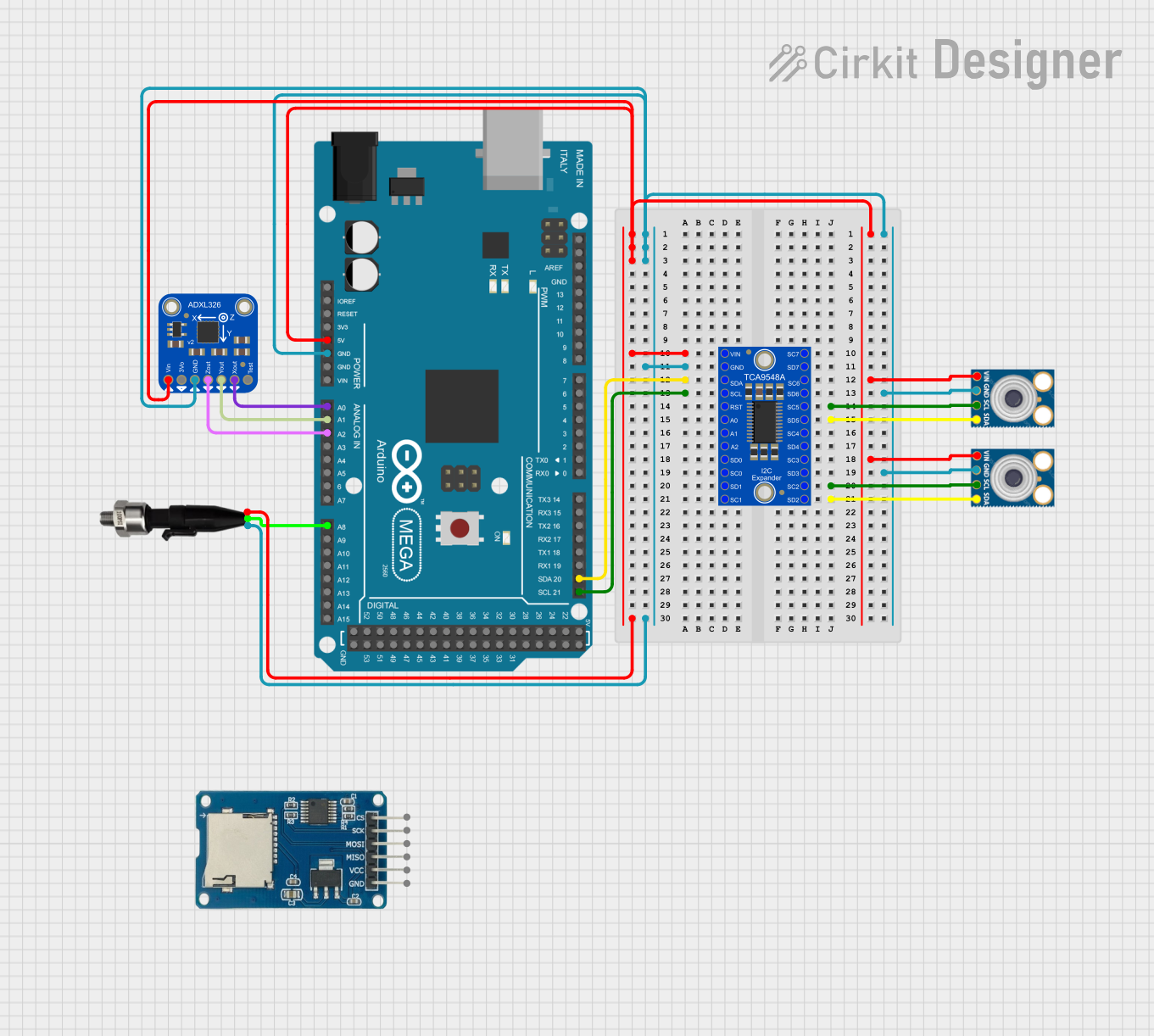
 Open Project in Cirkit Designer
Open Project in Cirkit Designer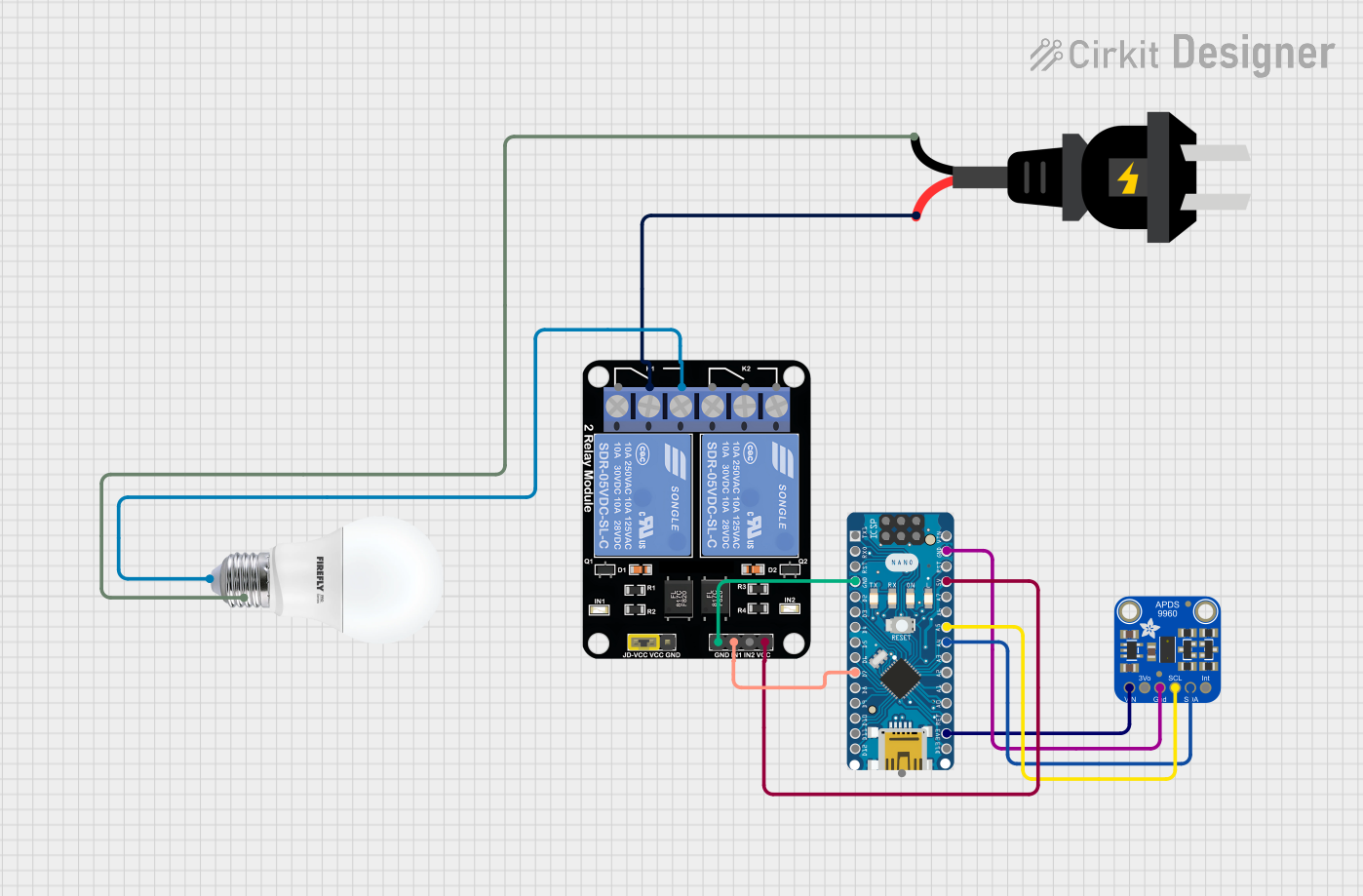
 Open Project in Cirkit Designer
Open Project in Cirkit Designer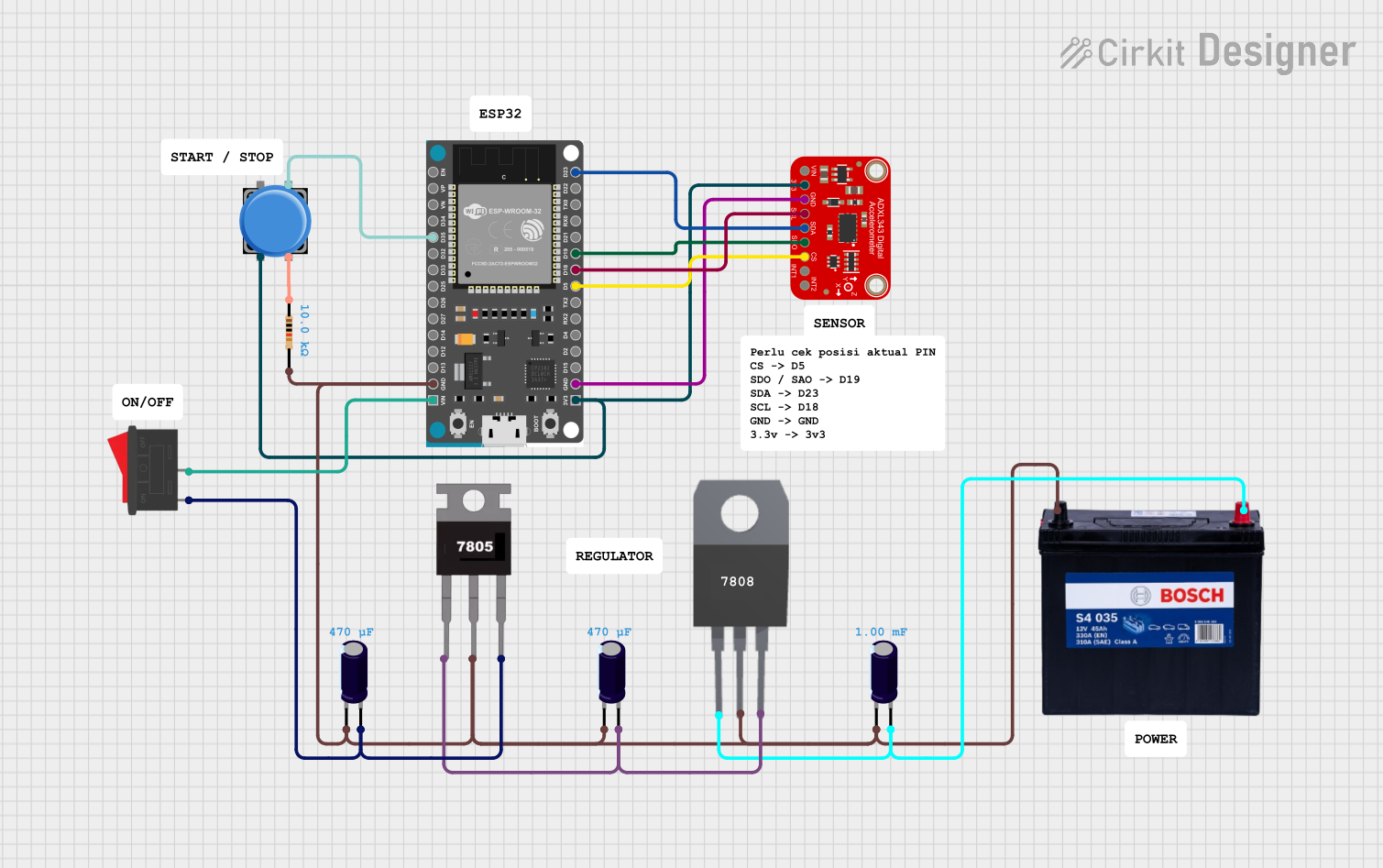
 Open Project in Cirkit Designer
Open Project in Cirkit Designer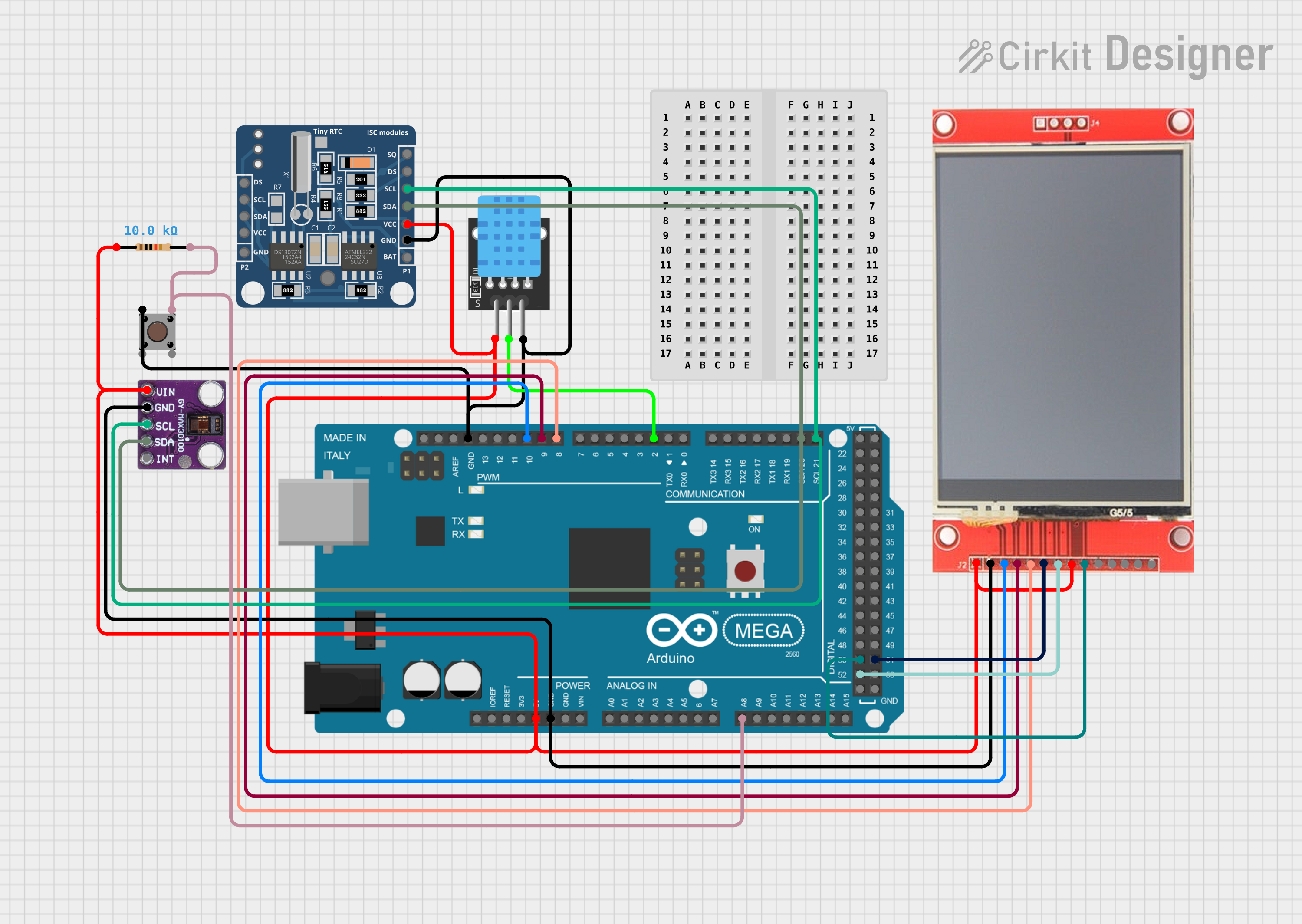
 Open Project in Cirkit Designer
Open Project in Cirkit DesignerExplore Projects Built with Adafruit AS7341

 Open Project in Cirkit Designer
Open Project in Cirkit Designer
 Open Project in Cirkit Designer
Open Project in Cirkit Designer
 Open Project in Cirkit Designer
Open Project in Cirkit Designer
 Open Project in Cirkit Designer
Open Project in Cirkit DesignerTechnical Specifications
Key Technical Details
- Spectral Range: Approximately 350 nm to 1000 nm
- Channels: 11 independent channels
- Resolution: 16-bit digital output
- Interface: I2C (up to 400 kHz)
- Operating Voltage: 3.3V to 5V
- Current Consumption: 5 mA typical
- Operating Temperature: -30°C to 70°C
Pin Configuration and Descriptions
| Pin Number | Name | Description |
|---|---|---|
| 1 | VIN | Power supply (3.3V to 5V) |
| 2 | GND | Ground connection |
| 3 | SCL | I2C clock line |
| 4 | SDA | I2C data line |
| 5 | INT | Interrupt output (active low) |
| 6 | RST | Reset input (active low) |
Usage Instructions
Integration with a Circuit
To use the AS7341 in a circuit, follow these steps:
- Connect the VIN pin to a 3.3V or 5V power supply.
- Connect the GND pin to the ground of your power supply.
- Connect the SCL and SDA pins to the I2C clock and data lines on your microcontroller, such as an Arduino UNO.
- (Optional) Connect the INT pin to an available digital input on your microcontroller if you wish to use the interrupt feature.
- (Optional) Connect the RST pin to a digital output on your microcontroller if you wish to control the reset function.
Important Considerations and Best Practices
- Ensure that the power supply is within the specified voltage range.
- Use pull-up resistors on the I2C lines if they are not already present on the microcontroller board.
- Avoid exposing the sensor to direct sunlight or high-intensity light sources that could damage the sensor.
- Calibrate the sensor for the specific application to ensure accurate readings.
Example Code for Arduino UNO
#include <Wire.h>
#include <Adafruit_AS7341.h>
Adafruit_AS7341 as7341;
void setup() {
Serial.begin(9600);
// Initialize the AS7341 sensor
if (!as7341.begin()) {
Serial.println("Failed to initialize AS7341!");
while (1);
}
Serial.println("AS7341 initialized successfully.");
}
void loop() {
// Read and print the raw values from each channel
Serial.print("F1: "); Serial.println(as7341.readChannel(AS7341_CHANNEL_415nm));
Serial.print("F2: "); Serial.println(as7341.readChannel(AS7341_CHANNEL_445nm));
// Add additional channels as needed
delay(1000); // Delay for 1 second before reading again
}
This example initializes the AS7341 sensor and reads the raw values from two of the channels, printing them to the Serial Monitor. Make sure to include the Adafruit AS7341 library in your Arduino IDE before uploading the code.
Troubleshooting and FAQs
Common Issues
- Sensor not detected: Ensure that the wiring is correct and that the sensor is properly powered.
- Inaccurate readings: Calibrate the sensor for your specific lighting conditions.
- I2C communication errors: Check for proper pull-up resistors and that no other device is conflicting on the I2C bus.
Solutions and Tips for Troubleshooting
- Double-check all connections and ensure that the sensor is not exposed to extreme lighting conditions.
- Use the interrupt feature to manage the timing of light measurements effectively.
- If using multiple I2C devices, ensure that each device has a unique address and that the bus is not overloaded.
FAQs
Q: Can the AS7341 sensor measure UV light? A: The AS7341 is designed for visible light and near-infrared (NIR) measurements. It does not have a dedicated UV channel.
Q: Is the AS7341 sensor waterproof? A: No, the AS7341 sensor is not waterproof. Protect it from moisture and liquids.
Q: How do I calibrate the sensor? A: Calibration involves taking readings under a known light source and adjusting the readings accordingly. Adafruit provides a detailed guide on calibration procedures.
For further assistance, consult the Adafruit AS7341 datasheet and the Adafruit support forums.